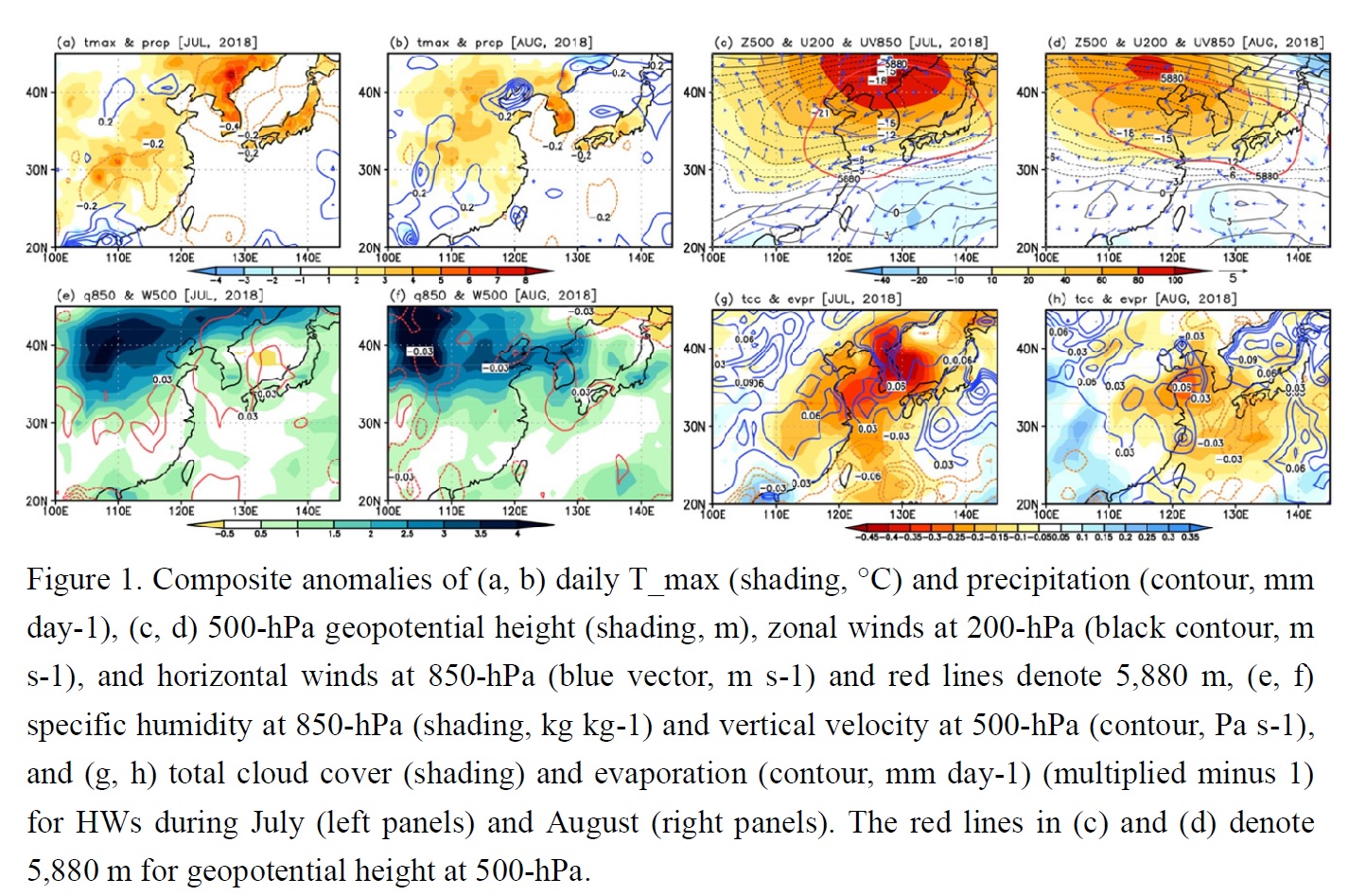Graphical Abstract
Ha, K.-J., J.-H. Yeo, Y.-W. Seo, E.-S. Chung, J.-Y. Moon, X. Feng, Y.-W. Lee, and C.-H. Ho, 2020: What caused the extraordinarily hot 2018 summer in Korea? J. Meteor. Soc. Japan, 98, 153-167.
Special Edition on Extreme Rainfall Events in 2017 and 2018
https://doi.org/10.2151/jmsj.2020-009
Graphical Abstract
Plain Language Summary: This study intends to diagnose an extraordinary heatwave (HW) in 2018 that the Korean Peninsula (KP) has experienced extreme heat throughout July and August with the highest temperature and longest consecutive hot days on record since 1907. The causes of these abnormal temperature patterns were examined with the difference from other episodic events as in 1994.
Highlights:
- The prolonged HWs in the KP is affected by the anticyclonic circulation related to the northern Pacific High (NPH) with abnormally less rainfall from July to August.
- The results suggest that a modon-like blocking with the northwestward expansion of NPH and a cyclonic anomaly in the east China Sea from July to August causes the strong static atmosphere in the mid-latitudes and seems to have played a crucial role.
- Low precipitation and massive evapotranspiration with the persistent insolation in July 2018 influenced the dry condition at the surface.
- Further studies on the northward expansion of the NPH and its association with jet streams are required in the context of vulnerability of HWs and the contribution of anthropogenic causes.







